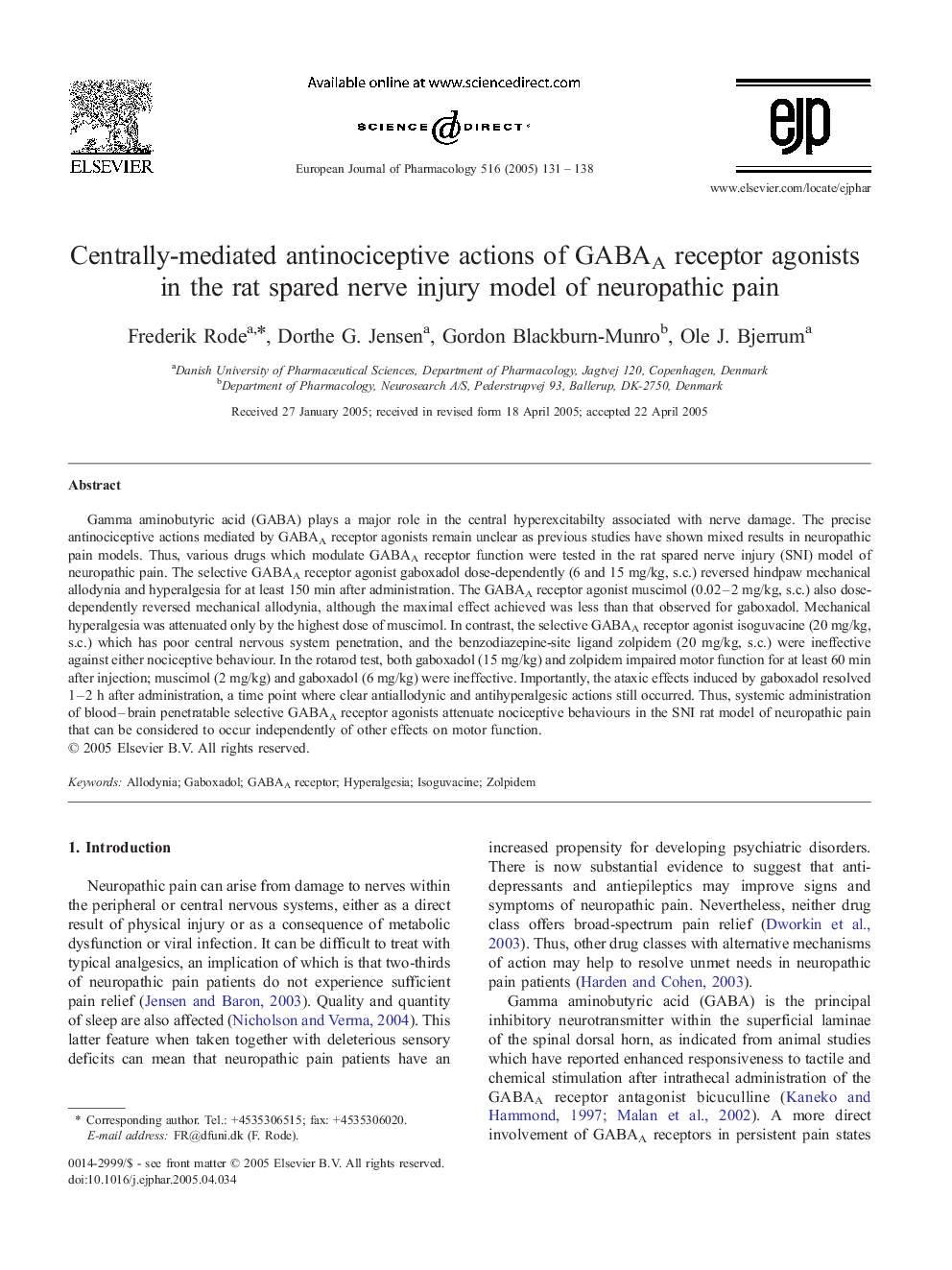| Article ID | Journal | Published Year | Pages | File Type |
|---|---|---|---|---|
| 9921274 | European Journal of Pharmacology | 2005 | 8 Pages |
Abstract
Gamma aminobutyric acid (GABA) plays a major role in the central hyperexcitabilty associated with nerve damage. The precise antinociceptive actions mediated by GABAA receptor agonists remain unclear as previous studies have shown mixed results in neuropathic pain models. Thus, various drugs which modulate GABAA receptor function were tested in the rat spared nerve injury (SNI) model of neuropathic pain. The selective GABAA receptor agonist gaboxadol dose-dependently (6 and 15 mg/kg, s.c.) reversed hindpaw mechanical allodynia and hyperalgesia for at least 150 min after administration. The GABAA receptor agonist muscimol (0.02-2 mg/kg, s.c.) also dose-dependently reversed mechanical allodynia, although the maximal effect achieved was less than that observed for gaboxadol. Mechanical hyperalgesia was attenuated only by the highest dose of muscimol. In contrast, the selective GABAA receptor agonist isoguvacine (20 mg/kg, s.c.) which has poor central nervous system penetration, and the benzodiazepine-site ligand zolpidem (20 mg/kg, s.c.) were ineffective against either nociceptive behaviour. In the rotarod test, both gaboxadol (15 mg/kg) and zolpidem impaired motor function for at least 60 min after injection; muscimol (2 mg/kg) and gaboxadol (6 mg/kg) were ineffective. Importantly, the ataxic effects induced by gaboxadol resolved 1-2 h after administration, a time point where clear antiallodynic and antihyperalgesic actions still occurred. Thus, systemic administration of blood-brain penetratable selective GABAA receptor agonists attenuate nociceptive behaviours in the SNI rat model of neuropathic pain that can be considered to occur independently of other effects on motor function.
Related Topics
Life Sciences
Neuroscience
Cellular and Molecular Neuroscience
Authors
Frederik Rode, Dorthe G. Jensen, Gordon Blackburn-Munro, Ole J. Bjerrum,
